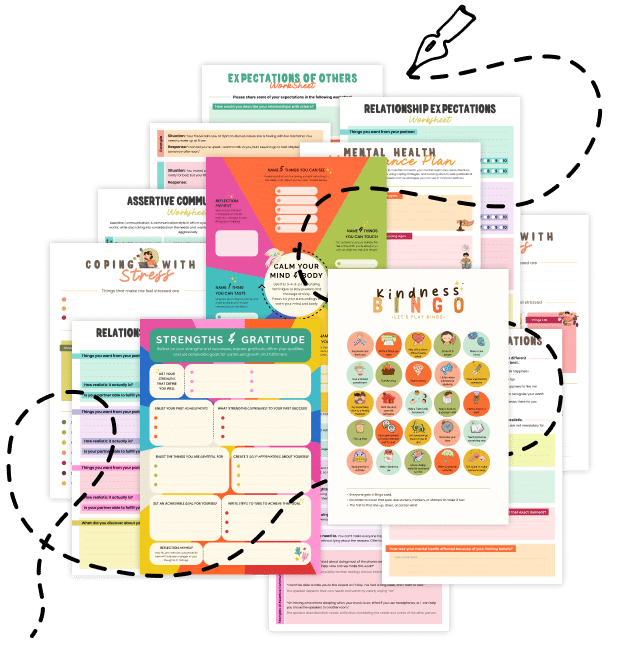20 Things You Should Know About Interoceptive Awareness
Learn how tuning into internal bodily signals—from hunger pangs to your heartbeat—can improve mental clarity, emotional regulation, and overall well-being. Discover 20 key insights on Interoceptive Awareness.
1. What Is Interoceptive Awareness?
Interoceptive Awareness is your ability to perceive and interpret internal bodily sensations like heartbeat, breathing, hunger, or muscle tension. It’s essentially how “in tune” you are with the signals your body sends.
2. Beyond the Five Senses
While most discussions of senses focus on sight, hearing, taste, smell, and touch, interoception is considered a “hidden” sense—providing crucial internal feedback about your physical state.
3. The Mind-Body Connection
Accurate interoceptive awareness helps bridge the gap between emotions and physiological states. You may recognize that stress triggers faster breathing or that calmness aligns with a steadier heart rate.
4. Emotional Regulation Benefits
When you detect bodily cues of anxiety (like a racing heart or tight chest) early, you can implement coping strategies—deep breaths, grounding exercises, or quick breaks—before those feelings escalate.
5. Gut Feelings Have a Basis
That “gut feeling” or “butterflies in your stomach” can be partly attributed to interoceptive signals. Paying attention to these subtle cues can improve decision-making, as they often carry valuable emotional or intuitive data.
6. Mindfulness and Interoception
Mindfulness practices—like body scans or focused breathing—heighten awareness of internal signals. Over time, you learn to notice sensations without judgment, fostering a calmer, more balanced mindset.
7. The Insula’s Role
The insula (a region of the brain) plays a big part in processing interoceptive information. Differences in insula activity can affect how strongly or accurately you perceive bodily signals.
8. Stress-Related Disorders
Low interoceptive awareness can contribute to conditions like anxiety, eating disorders, or chronic stress. If you struggle to read bodily signals—like when you’re hungry or full—you might overeat or ignore hunger altogether.
9. Over vs. Under-Sensitivity
Some people have hypersensitivity, noticing every subtle change in heartbeat or breath, potentially leading to heightened anxiety. Others may be undersensitive, missing important cues about hunger, fatigue, or emotional distress.
10. Interoception and Pain
A well-tuned interoceptive sense can help distinguish between normal bodily sensations and genuine pain signals. This skill may reduce catastrophizing about minor aches or help you detect real issues earlier.
11. Importance for Athletes
Athletes who track their heartbeat, breathing, and muscle tension can optimize performance and avoid injury. Recognizing when fatigue is about to set in allows them to pace themselves or adjust training accordingly.
12. Behavioral Eating Cues
Many diet experts emphasize mindful eating—focusing on hunger and fullness sensations. Improved interoceptive awareness can help you eat more intuitively, reducing overeating or emotional snacking.
13. Breathwork and Yoga
Practices like yoga, tai chi, or breathing exercises systematically direct attention toward bodily sensations. Over time, these habits can greatly enhance your interoceptive skills.
14. Children and Interoception
Teaching kids to identify internal cues—like thirst, tiredness, or the need for a break—can foster better self-regulation early in life. It also supports emotional resilience as they grow.
15. Relationship to Emotional Clarity
People who are more interoceptively aware often show higher emotional granularity—they can distinguish between nuanced feelings like frustration, disappointment, or sadness, leading to more precise coping strategies.
16. Tech Tools
Wearable devices (e.g., heart rate or stress level monitors) can guide you toward noticing real-time internal changes. Overusing them might reduce natural attunement, but balanced use can jumpstart your awareness.
17. Interoception in Therapy
Some therapies, like Somatic Experiencing or certain forms of CBT, incorporate interoceptive exercises. Therapists guide clients to observe bodily sensations related to stress or trauma, aiding processing and recovery.
18. Cultural and Individual Variation
Different cultural practices encourage or discourage focus on bodily signals. Additionally, genetics and personal experiences shape individual sensitivity—so there’s no one-size-fits-all pattern for interoceptive perception.
19. Building It Gradually
Improving interoceptive awareness is a practice. Regularly checking in—“What’s happening in my body right now?”—and labeling sensations can rewire your brain to pay closer attention over time.
20. Related Topics to Explore
- Mindful Acceptance: Observing bodily sensations without judgment.
- Emotional Granularity: Labeling emotions precisely for better self-awareness.
- Neurobics: Brain exercises that expand sensory and cognitive pathways.
- Attentional Set Shifting: Pivoting smoothly from external tasks to internal states.
Quick Tips to Boost Interoceptive Awareness
- Body Scan Meditations: Take five minutes daily to mentally scan from head to toe.
- Check in with Breath: Notice if it’s shallow or deep, fast or slow.
- Use Journal Prompts: Record physical sensations when feeling certain emotions.
- Slow Down Meals: Savor tastes and textures, pausing to note hunger/fullness cues.
- Seek Feedback: Talk to a therapist or use wearable data to correlate internal feelings with measurable signs.
Cultivating Interoceptive Awareness is about tuning into your inner signals—the heartbeat, tension, hunger, or subtle vibrations that color your emotional landscape. By refining this sense, you can gain better emotional regulation, improved stress management, and deeper trust in your body’s cues. Whether it’s through mindful breathing, yoga, or simple daily check-ins, boosting interoception can enrich every facet of your mental and physical well-being.
Share this article with friends who could benefit from getting in touch with their bodies. It might be the gentle nudge they need to start listening to the quiet wisdom within!

